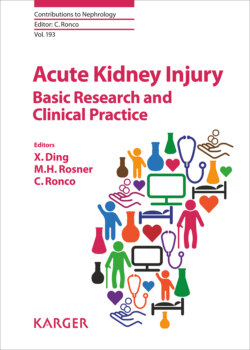Читать книгу Acute Kidney Injury - Basic Research and Clinical Practice - Группа авторов - Страница 37
На сайте Литреса книга снята с продажи.
Introduction
ОглавлениеThe introduction of more robust definitions of acute renal failure including the Risk, Injury, Failure, Loss, End-stage kidney disease criteria and, more recently, the Kidney Disease: Improving Global Outcomes (KDIGO) criteria have revolutionized the field of critical care nephrology [1–3]. The introduction of the concept of acute kidney injury (AKI) has enabled identification and classification of critically ill patients with AKI who previously may have been labeled as having acute renal failure or whose renal function may have been dismissed as a relatively benign consequence of the underlying pathological process [4, 5]. The success of this approach is borne by the explosion of new data describing this syndrome and the consequences thereof [1, 6]. This has proved particularly enlightening with regard to the long-term complications of this syndrome [7–9]. The main drivers behind this “rebranding” of acute renal failure stemmed from the desire to introduce robust criteria to enable research questions to be answered coupled with the realization that even relatively small changes in serum creatinine (SCr) translate into a significantly poorer outcome for patients [10]. However, the classification of AKI has not been without criticism [11–13]. This is driven, in part, by the use of the readily available classical measures of renal function (namely SCr and/or urine output) as the diagnostic criteria by which AKI is defined both of which are associated with significant inadequacies [14, 15].
